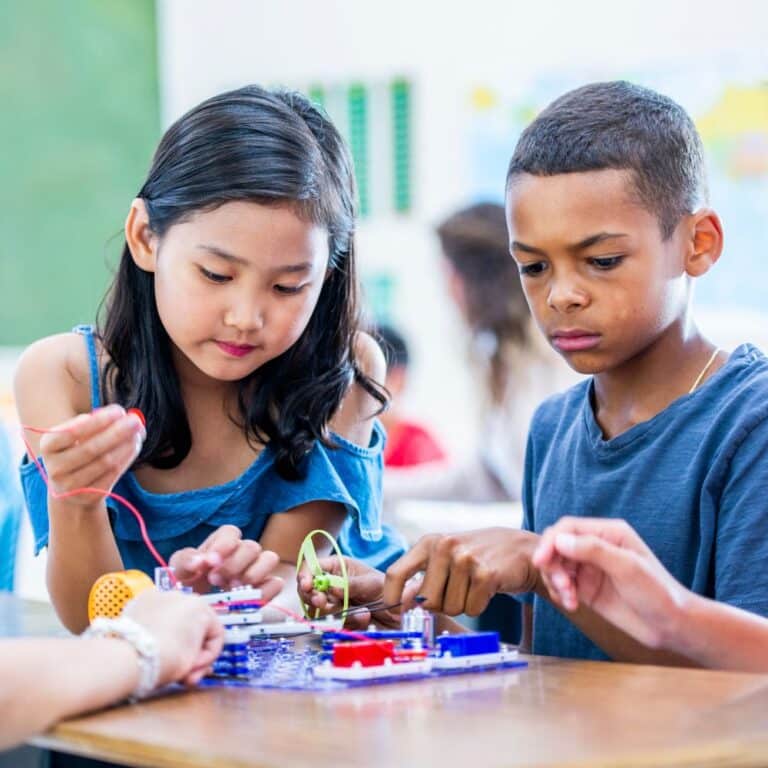One evening, my two youngest children were locked in a heated battle over a blue toy car. Voices were raised, emotions were high, and neither one was willing to budge. My first instinct? Step in and settle it for them. But then I caught myself—I knew this was a perfect opportunity to teach them how to handle conflict on their own.
Instead of taking the toy or choosing a winner, I stayed calm and said, “I see that you are both upset. Let’s figure out a fair way to solve this together.” We talked about how each child felt and practiced using “I” statements like “I feel upset” or “I feel left out.” Then we worked together to come up with solutions. In the end, they decided to use a timer and take turns. They were not only calmer—they were proud of themselves.
Moments like this remind me that conflict resolution is not about stopping all disagreements. It is about helping our children learn how to handle them in a healthy and respectful way.
Why Conflict Resolution Matters

Children argue for many reasons—over toys, turns, hurt feelings, or misunderstandings. These moments are normal. But how well they learn to handle them can shape how they manage their emotions and build relationships now and in the future.
Here are a few important reasons to teach conflict resolution:
- Builds emotional skills – Children learn to recognize and manage their feelings.
- Teaches empathy – They begin to see other people’s points of view.
- Reduces anger and fighting – Children use words instead of yelling or hitting.
- Improves friendships – Solving problems together helps build cooperation and the ability to compromise.
- Prepares them for life – Conflict happens everywhere, in every relationship—at home, school, and work.
Five Steps to Teach Kids How to Resolve Conflict
1. Help Them Notice Their Feelings
Before solving a problem, children need to know how they feel. Young children often react with anger or tears because they do not know how to manage frustration.
- Ask them to name their feelings: “Are you sad, angry, or frustrated?”
- Use a feelings chart to help little ones find the right word.
- Stay calm yourself. Children learn from how we react.
✨ Example: If my kids are arguing, instead of jumping in, I’ll say: “Let’s take a deep breath and name how we’re feeling before we solve the problem.”
2. Teach Respectful Communication
When children are upset, they sometimes blame or shout. Teaching them to use words in a kind and clear way can help prevent arguments from getting worse.
- Use “I” statements: “I feel left out when I do not get a turn.”
- Practice active listening: Make eye contact, repeat what the other person said.
- Role-play how to talk through a disagreement.
✨ Example: When my child was upset about a friend taking their toy, I encouraged them to say: “I feel frustrated when my toy is taken without asking. Can we share or take turns?”
3. Guide Them to Solve the Problem
It can be tempting to fix problems for children, but guiding them to come up with solutions helps them grow.
- Ask open-ended questions like, “What do you think would be fair?”
- Offer two choices to help them feel in control.
- Talk about working as a team, not as opponents; encourage kids to brainstorm solutions together.
✨ Example: Two friends arguing over who goes first in a game can flip a coin or take turns picking the next game.
4. Teach Compromise and Understanding
Children should learn that both people’s feelings matter. Even in a conflict, everyone should feel heard and respected.
- Ask them to think about how the other person felt.
- Explain that the best solution is often one that works for both sides.
- Praise their efforts to share or take turns to encourage kindness.
✨ Example: If one child wants to play tag and another wants to play hide-and-seek, encourage them to combine games or take turns picking.
5. Encourage Making Amends
After a conflict, it is important for children to take responsibility and repair the relationship.
- Teach them to give a real apology: “I am sorry I yelled. I will speak calmly next time.”
- Help them take action to make things right, like rebuilding a toy they knocked over.
- Remind them that conflict is normal, and they can move forward stronger.
✨ Example: If one of my kids knocks over their sibling’s tower in frustration, I encourage them to help rebuild it together as a way to make amends.
Dad Thoughts
Conflict resolution does not mean stopping all arguments. It means helping children learn how to respond in a calm, respectful way. As parents, our role is to guide them—not fix everything for them.
By teaching children how to notice their feelings, speak respectfully, solve problems, compromise, and make amends, we give them skills that will serve them for life.
References
- Gottman, J. (1997). Raising an Emotionally Intelligent Child: The Heart of Parenting.
- Shure, M. B., & Spivack, G. (1982). Interpersonal Cognitive Problem-Solving and Primary Prevention.
- Thompson, R. A. (2014). Stress and Child Development. Future of Children, 24(1), 41-59.



